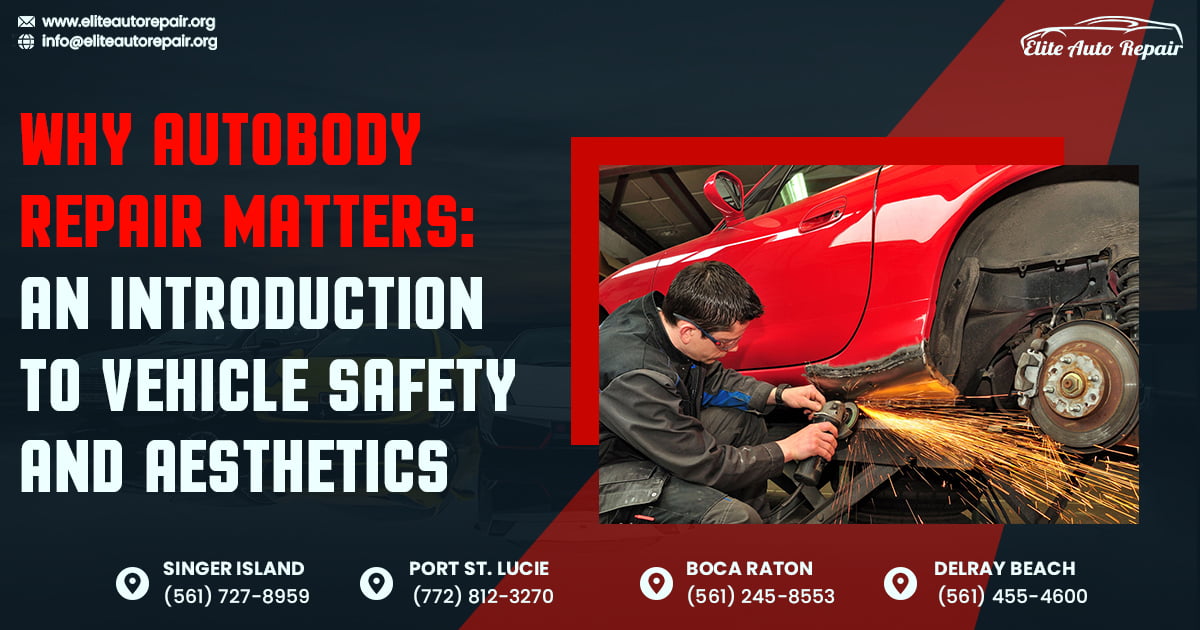Common types of auto body damage include dents, scratches, fender benders, hail damage, door dings, bumper damage, paint chips, and windshield cracks. These issues can significantly impact your vehicle’s appearance, value, and safety. Dents, whether from minor impacts or hail, can lead to rust and corrosion if left untreated. Scratches and paint damage detract from the car’s looks and expose the underlying metal to the elements, potentially causing further damage. Fender benders and collisions can result in more severe structural damage, such as frame issues, requiring professional inspection and repair. Bumper damage is common due to its exposed position and can compromise the vehicle’s protective function. Windshield cracks and chips look unsightly, impair visibility, and may worsen over time if not promptly addressed. Addressing auto body damage promptly through paintless dent repair, scratch removal, or professional collision repair is crucial for maintaining your car’s value, appearance, and safety on the road.
Dents and Dings
One of the most prevalent forms of autobody damage is dents and dings. These minor imperfections can occur from parking lot mishaps, hailstorms, or careless handling. While they may seem insignificant, ignoring dents can lead to paint damage and rust formation, ultimately compromising the vehicle’s structural integrity.
Dent repair typically involves techniques such as Paintless Dent Repair (PDR), which preserves the original paint finish. This method is not only cost-effective but also ensures a quicker turnaround, allowing your vehicle to return to its optimal condition without extensive repainting. Understanding the Common Types of automobile damage and how they affect your car helps you make informed decisions regarding repairs.
Scratches
Scratches are another common type of autobody damage that can detract from your vehicle’s aesthetic appeal. They can result from various factors, including road debris, shopping carts, or improper washing techniques. Addressing scratches promptly is essential, as they can expose the underlying metal to the elements, leading to rust and corrosion.
Professional auto body shops can repair scratches through touch-up techniques, which involve applying primer, base coat, and clear coat to restore the vehicle’s appearance. By recognizing the Common Types of Autobody Damage and How They Affect Your Car, you can take proactive steps to maintain your vehicle’s value.
Paint Damage
Paint damage is often a consequence of scratches, dents, or environmental factors such as UV exposure and harsh weather conditions. It affects the vehicle’s appearance and can lead to more severe issues, including rust.To repair paint damage, a comprehensive approach may be required, including sanding down the affected area, applying primer, and repainting. Understanding the Common Types of automobile damage and how they affect your car is vital for maintaining your vehicle’s exterior and preventing further deterioration.
Collision Damage
Collision damage is the most severe type of autobody damage. It can result from accidents involving other vehicles or stationary objects, leading to significant structural and cosmetic issues. The implications of collision damage can be extensive, affecting not just the car’s body but also its safety features and functionality.
Repairing collision damage often requires a detailed assessment by skilled technicians, who may need to replace parts, realign the frame, and repaint the vehicle. Recognizing the Common Types of automobile damage and how they affect your car is crucial for understanding the potential costs and necessary repairs associated with such incidents.
Windshield Damage
While not technically part of the car’s body, windshield damage is a significant concern for vehicle owners. Cracks and chips can occur from flying debris or severe weather conditions. Such damage can impair visibility and compromise the structural integrity of the vehicle.
Depending on the severity of the damage, windshield repair typically involves filling in cracks or replacing the entire windshield. Awareness of the Common Types of Autobody Damage and how they affect your car can help you address these issues before they escalate.
Weather Damage
Weather-related damage can take many forms, including hail damage, sun exposure, and rust from moisture. These factors can significantly affect the vehicle’s paint and metal components, leading to long-term issues if not addressed promptly. However, with regular maintenance, such as washing and waxing, you can take proactive steps to protect your vehicle from weather damage. Understanding the Common Types of Autobody Damage and How They Affect Your Car puts the responsibility in your hands, allowing you to take these preventive measures and ensure your vehicle’s longevity.
Conclusion
In conclusion, being aware of the Common Types of Autobody Damage and How They Affect Your Car is essential for all vehicle owners. From minor dents and scratches to severe collision and weather damage, each type of damage poses unique challenges and repair considerations. By recognizing these issues early and seeking professional assistance, you can maintain your vehicle’s appearance, safety, and value. Remember, you’re not alone in this journey. There are skilled technicians and auto body shops ready to help you. Regular maintenance and prompt repairs, with their guidance, are key to ensuring your car remains in excellent condition for years to come.













